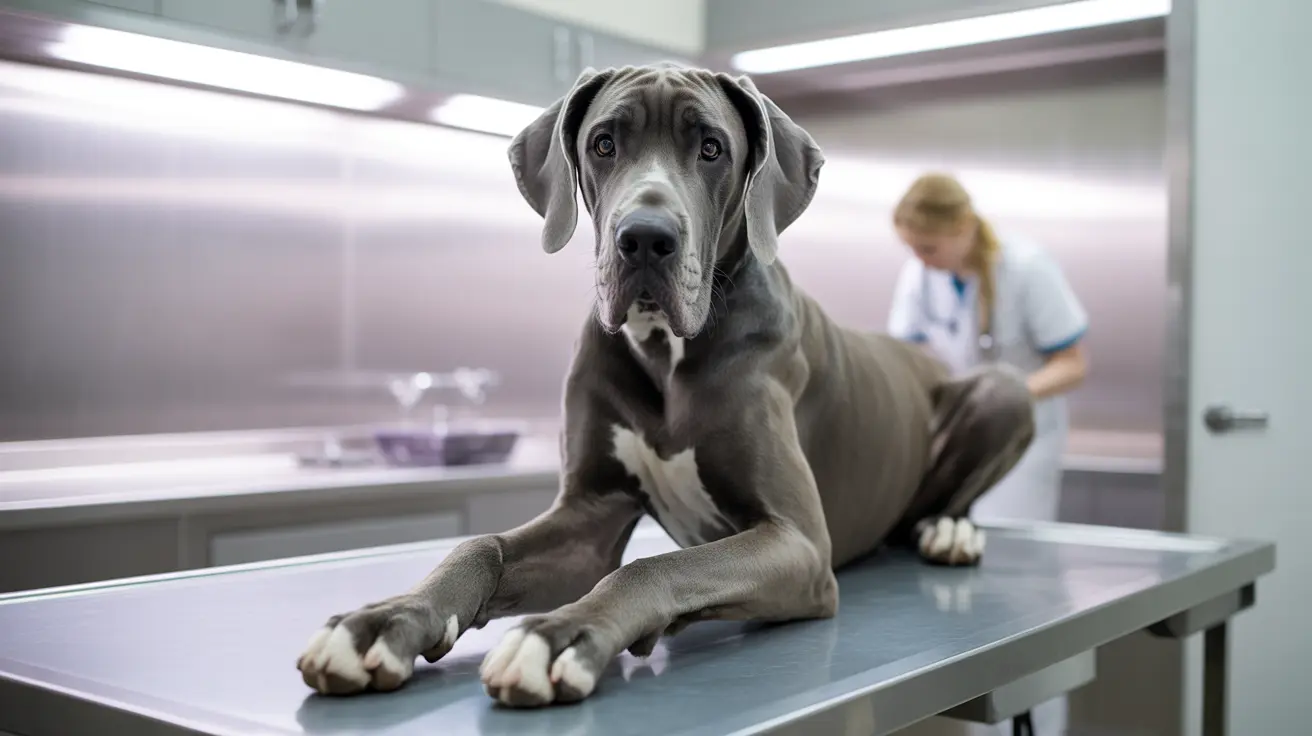What is Carpal Valgus?
Carpal valgus is a common angular limb deformity in dogs where the front paws point outward, creating what's often called an "East-West" stance. This condition affects the alignment of the dog's front legs, specifically in the carpal (wrist) joint area, causing the lower portion of the leg to deviate outward from the normal straight alignment.
This orthopedic condition can range from mild to severe, potentially affecting your dog's mobility and quality of life. Understanding carpal valgus is crucial for early detection and appropriate intervention, as timely treatment can significantly improve outcomes for affected dogs.
Common Signs and Symptoms
Dogs with carpal valgus typically display several characteristic signs that pet owners should watch for:
- Outward-pointing front paws
- Irregular walking pattern
- Visible deviation in leg alignment
- Possible swelling around the carpal joint
- Reluctance to exercise or play
- Signs of discomfort or pain during movement
In puppies, these signs may become more noticeable as they grow, particularly during rapid growth phases. Early recognition of these symptoms is key to successful management of the condition.
Causes and Risk Factors
Several factors can contribute to the development of carpal valgus in dogs:
- Premature closure of growth plates
- Genetic predisposition
- Nutritional imbalances during growth
- Trauma or injury to growth plates
- Developmental abnormalities
Large and giant breed puppies are particularly susceptible to this condition, especially during their rapid growth phases. Proper nutrition and careful monitoring during growth periods are essential for prevention.
Diagnosis Process
Veterinarians use a comprehensive approach to diagnose carpal valgus:
- Physical examination to assess leg alignment
- Gait analysis to evaluate movement patterns
- Radiographs (X-rays) of both front legs
- Sometimes advanced imaging like CT scans
- Evaluation of growth plate status
This thorough diagnostic process helps determine the severity of the condition and guides treatment planning.
Treatment Options
Treatment for carpal valgus varies depending on severity and the dog's age:
Conservative Management
- Physical therapy exercises
- Activity modification
- Supportive bracing or splinting
- Proper nutrition management
Surgical Intervention
- Corrective osteotomy
- Internal fixation
- External skeletal fixation
- Growth plate manipulation (in young dogs)
The choice of treatment depends on factors such as the dog's age, severity of the condition, and overall health status.
Recovery and Long-term Management
Post-treatment care is crucial for optimal outcomes:
- Regular veterinary check-ups
- Controlled exercise programs
- Physical rehabilitation
- Weight management
- Joint supplements as recommended
- Modified activity levels as needed
Most dogs show significant improvement with appropriate treatment and dedicated follow-up care.
Frequently Asked Questions
What is carpal valgus in dogs, and how does it affect their gait?
Carpal valgus is a condition where a dog's front paws point outward, creating an "East-West" stance. This affects their gait by causing irregular weight distribution and potentially leading to an awkward walking pattern that can strain joints and muscles.
How can I identify if my dog has a carpal valgus deformity, and what are the symptoms?
Look for outward-pointing front paws, irregular walking patterns, visible leg misalignment, and possible swelling around the carpal joints. Dogs may also show reluctance to exercise or signs of discomfort during movement.
What are the most common causes of carpal valgus in dogs, and can it be prevented?
Common causes include premature growth plate closure, genetic factors, and nutritional imbalances. Prevention focuses on proper nutrition, especially in growing puppies, and avoiding trauma to growth plates during development.
What are the treatment options for carpal valgus in dogs, and when is surgery recommended?
Treatment options range from conservative management (physical therapy, bracing) to surgical correction. Surgery is typically recommended for severe cases or when conservative treatment fails to provide adequate improvement.
How can I help manage or prevent further complications from carpal valgus in my dog through diet and exercise?
Maintain a balanced diet appropriate for your dog's age and size, ensure proper weight management, and follow veterinary recommendations for exercise modification. Regular check-ups and controlled activity levels can help prevent complications.






